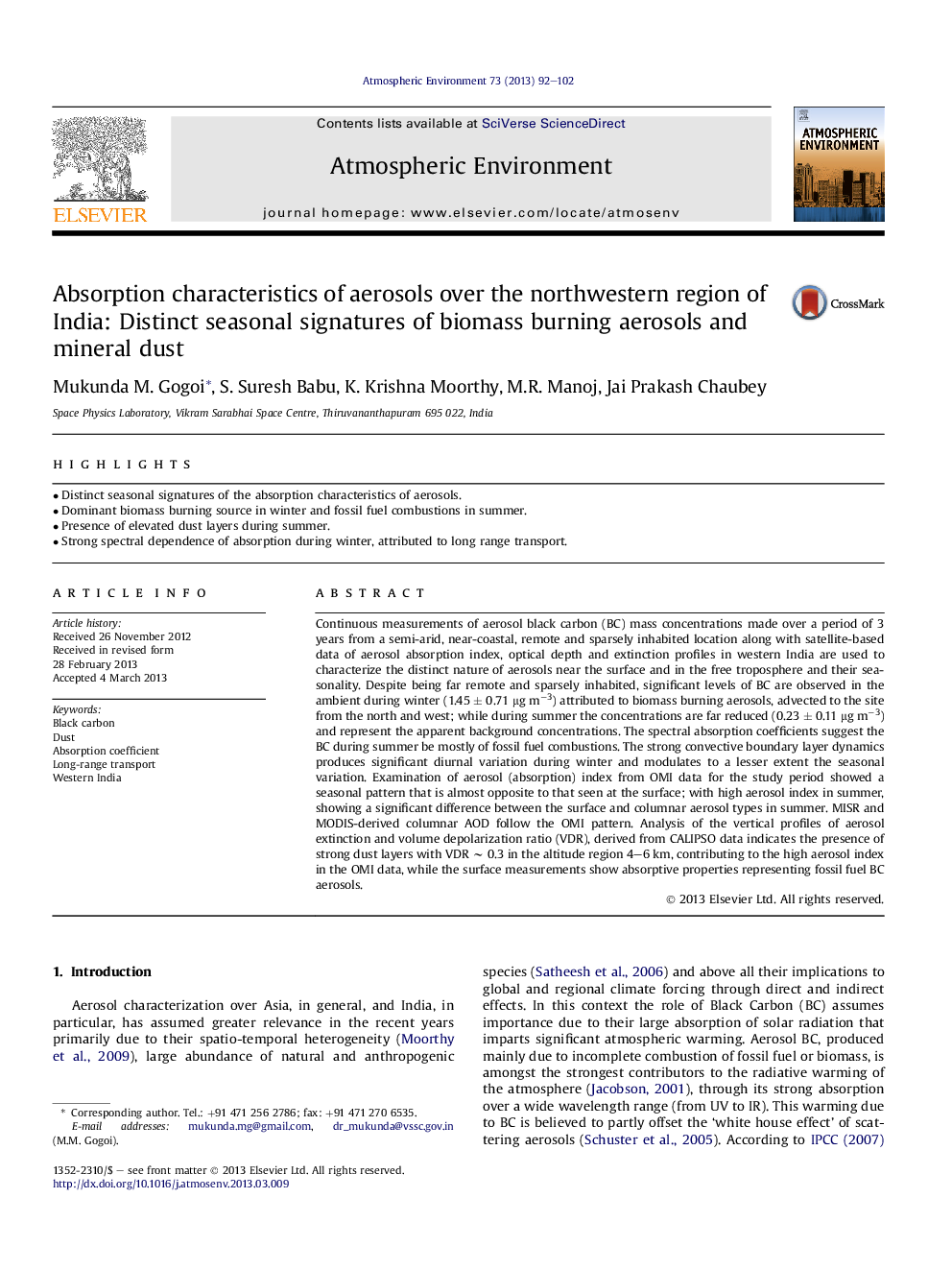| Article ID | Journal | Published Year | Pages | File Type |
|---|---|---|---|---|
| 4438225 | Atmospheric Environment | 2013 | 11 Pages |
•Distinct seasonal signatures of the absorption characteristics of aerosols.•Dominant biomass burning source in winter and fossil fuel combustions in summer.•Presence of elevated dust layers during summer.•Strong spectral dependence of absorption during winter, attributed to long range transport.
Continuous measurements of aerosol black carbon (BC) mass concentrations made over a period of 3 years from a semi-arid, near-coastal, remote and sparsely inhabited location along with satellite-based data of aerosol absorption index, optical depth and extinction profiles in western India are used to characterize the distinct nature of aerosols near the surface and in the free troposphere and their seasonality. Despite being far remote and sparsely inhabited, significant levels of BC are observed in the ambient during winter (1.45 ± 0.71 μg m−3) attributed to biomass burning aerosols, advected to the site from the north and west; while during summer the concentrations are far reduced (0.23 ± 0.11 μg m−3) and represent the apparent background concentrations. The spectral absorption coefficients suggest the BC during summer be mostly of fossil fuel combustions. The strong convective boundary layer dynamics produces significant diurnal variation during winter and modulates to a lesser extent the seasonal variation. Examination of aerosol (absorption) index from OMI data for the study period showed a seasonal pattern that is almost opposite to that seen at the surface; with high aerosol index in summer, showing a significant difference between the surface and columnar aerosol types in summer. MISR and MODIS-derived columnar AOD follow the OMI pattern. Analysis of the vertical profiles of aerosol extinction and volume depolarization ratio (VDR), derived from CALIPSO data indicates the presence of strong dust layers with VDR ∼ 0.3 in the altitude region 4–6 km, contributing to the high aerosol index in the OMI data, while the surface measurements show absorptive properties representing fossil fuel BC aerosols.
